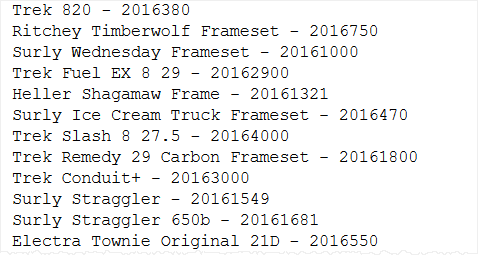Summary: in this tutorial, you will learn how to use the SQL Server cursor to process a result set, one row at a time.
SQL works based on set e.g., SELECT statement returns a set of rows which is called a result set. However, sometimes, you may want to process a data set on a row by row basis. This is where cursors come into play.
What is a database cursor
A database cursor is an object that enables traversal over the rows of a result set. It allows you to process individual row returned by a query.
SQL Server cursor life cycle
These are steps for using a cursor:

First, declare a cursor.
DECLARE cursor_name CURSOR
FOR select_statement;
Code language: SQL (Structured Query Language) (sql)To declare a cursor, you specify its name after the DECLARE keyword with the CURSOR data type and provide a SELECT statement that defines the result set for the cursor.
Next, open and populate the cursor by executing the SELECT statement:
OPEN cursor_name;
Code language: SQL (Structured Query Language) (sql)Then, fetch a row from the cursor into one or more variables:
FETCH NEXT FROM cursor INTO variable_list;
Code language: SQL (Structured Query Language) (sql)SQL Server provides the @@FETCHSTATUS function that returns the status of the last cursor FETCH statement executed against the cursor; If @@FETCHSTATUS returns 0, meaning the FETCH statement was successful. You can use the WHILE statement to fetch all rows from the cursor as shown in the following code:
WHILE @@FETCH_STATUS = 0
BEGIN
FETCH NEXT FROM cursor_name;
END;
Code language: SQL (Structured Query Language) (sql)After that, close the cursor:
CLOSE cursor_name;
Code language: SQL (Structured Query Language) (sql)Finally, deallocate the cursor:
DEALLOCATE cursor_name;
Code language: SQL (Structured Query Language) (sql)SQL Server cursor example
We’ll use the prodution.products table from the sample database to show you how to use a cursor:

First, declare two variables to hold product name and list price, and a cursor to hold the result of a query that retrieves product name and list price from the production.products table:
DECLARE
@product_name VARCHAR(MAX),
@list_price DECIMAL;
DECLARE cursor_product CURSOR
FOR SELECT
product_name,
list_price
FROM
production.products;
Code language: SQL (Structured Query Language) (sql)Next, open the cursor:
OPEN cursor_product;
Code language: SQL (Structured Query Language) (sql)Then, fetch each row from the cursor and print out the product name and list price:
FETCH NEXT FROM cursor_product INTO
@product_name,
@list_price;
WHILE @@FETCH_STATUS = 0
BEGIN
PRINT @product_name + CAST(@list_price AS varchar);
FETCH NEXT FROM cursor_product INTO
@product_name,
@list_price;
END;
Code language: SQL (Structured Query Language) (sql)After that, close the cursor:
CLOSE cursor_product;
Code language: SQL (Structured Query Language) (sql)Finally, deallocate the cursor to release it.
DEALLOCATE cursor_product;
Code language: SQL (Structured Query Language) (sql)The following code snippets put everything together:
DECLARE
@product_name VARCHAR(MAX),
@list_price DECIMAL;
DECLARE cursor_product CURSOR
FOR SELECT
product_name,
list_price
FROM
production.products;
OPEN cursor_product;
FETCH NEXT FROM cursor_product INTO
@product_name,
@list_price;
WHILE @@FETCH_STATUS = 0
BEGIN
PRINT @product_name + CAST(@list_price AS varchar);
FETCH NEXT FROM cursor_product INTO
@product_name,
@list_price;
END;
CLOSE cursor_product;
DEALLOCATE cursor_product;
Code language: SQL (Structured Query Language) (sql)Here is the partial output:

In practice, you will rarely use the cursor to process a result set in a row-by-row manner.
In this tutorial, you have learned how to use the SQL Server cursor to process a result set, each row at a time.